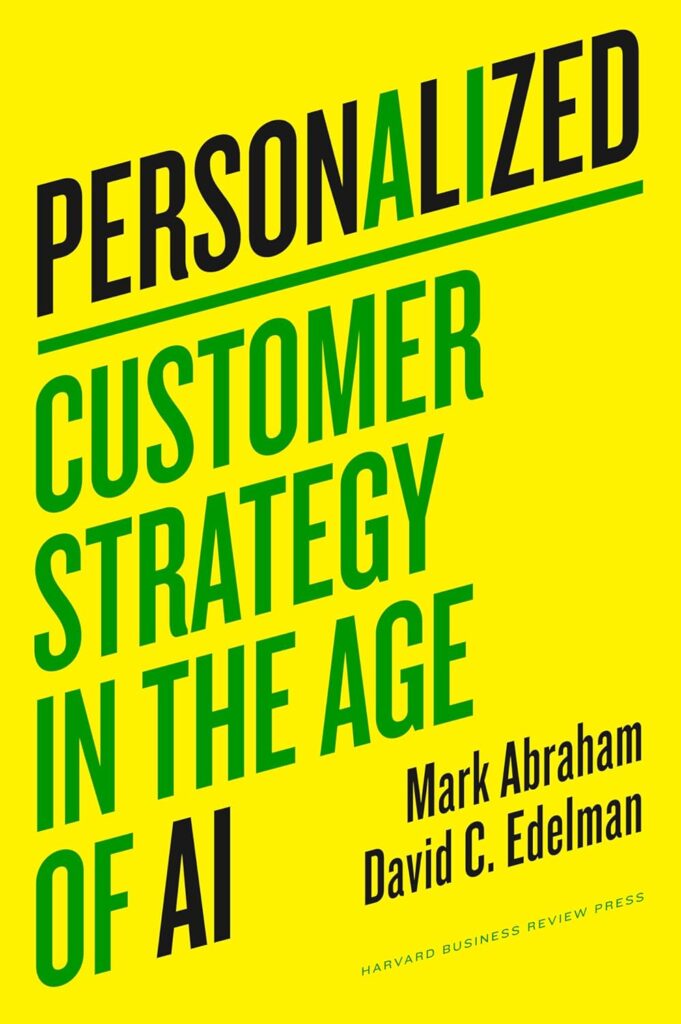


In a world where customer expectations are at an all-time high, personalization has become a strategic necessity, with AI-driven “Personalized Leaders”—or companies that effectively leveraging AI and other data-driven approaches to deliver highly tailored customer experiences—expected to capture nearly $2 trillion in accelerated growth by 2030. As consumers become even harder to delight, businesses must leverage AI to deliver seamless, customized experiences across every touchpoint. This shift goes beyond marketing, requiring an overhaul of organizational structures, integrating customer experience, marketing and data analytics to provide value at speed and scale.
While agile ways of working are critical to launching successful personalization efforts with momentum, a company’s organizational structure will need to evolve as it scales up. Every functional team will need to consider its level of resources and its talent requirements. Many activities will still need to happen at the functional level, but other activities (such as marketing operations or cross-channel orchestration) will eventually be better managed under one roof, rather than in several different areas of the organization. New roles and organization designs will be emerging that are more conducive to personalization at scale.
Most companies are organized by product or channel. Take the typical bank. Every spoke in the marketing hub—the call center, the in-branch offices, the email and direct-mail operations, the website, the app—is typically run by a different team reporting to a different part of the organization. And for all the talk of customer centricity, most banks are still organized around products—credit cards, mortgages, loans and so forth. While the marketing organization may generate broad consumer insights, those insights do not directly feed the efforts of the various teams that touch the customer journey. It is no wonder that many banks struggle to put in place cross-functional teams and agile ways of working. All of this explains their low ranking on the Personalization Index. But even retailers, who rank higher, are often organized around product-merchant teams, with limited resources to define and prioritize which customer strategies to pursue and how to activate them with cross-functional teams.
By starting quickly with agile pods, companies can notch up early wins, while sorting out which changes are most critical to the operating model as they scale their efforts. As organizations become more customer centric, they can shift P&L responsibilities, create new roles and functions and integrate existing functions.
Let’s look at four specific ways personalization leaders are doing this.
For personalization at scale to succeed, marketing needs to be an integrated function that brings together all channels to coordinate customer outreach. One senior leader, with analytics support, oversees execution across paid and owned channels, and across upper-funnel (i.e., brand-awareness- driving) and lower-funnel (i.e., conversion) marketing activities. This configuration enables smarter budget allocation and better orchestration of the push and pull conversations with customers across channels. It also ensures that the pods are not stepping over each other.
Furthermore, organizations are adding dedicated teams in charge of marketing operations to improve and automate the processes around channel orchestration and channel delivery. Without a strong marketing-operations function, teams across channel silos won’t be aware of what the customer is seeing in totality. Execution quality-control issues are also much more likely to arise, such as customers getting the wrong messages or tests being incorrectly measured, because the targeting or the control hold-outs were not executed properly.
Almost all organizations have consumer insights functions, but the best of these groups are being more explicitly charged with developing customer strategies that help the cross-functional teams advance from insights to action. Many companies are also appointing a senior owner of customer experience design—creating roles such as SVP or VP of customer experience, or charging an existing chief digital officer with these responsibilities. If experiences are essentially a “product” that the company offers, this leader is the “product manager” who oversees the development of the interfaces that customers will engage with online and in the physical world, and then is also accountable for the financial performance of those experiences. Some companies have also created chief customer officers or chief growth officers with explicit P&L responsibilities for driving revenue from digital channels and digital customer relationships.
Companies are centralizing teams and expanding them with additional resources and new senior leadership positions, like the chief data and analytics officer. Teams that previously sat in distinct parts of the organization are increasingly being merged (sometimes even with digital roles)—in particular, at banks, health providers, insurers and retailers. These data and analytics reorganizations are strengthening the linkage among data science (i.e., model and algorithm development), applied analytics (i.e., business intelligence) and the business functions that apply the analytics, from marketing to digital to supply chain to operations to finance. D&A leaders establish analytics teams focused on improving customer use cases, not just functional productivity. In doing so, they are not only bolstering the ability to deliver value; they are also creating a magnet for world-class talent that seeks out jobs that entail learning, working with like-minded people, and driving impact.
D&A leaders are also creating new tools for data democratization: arming marketing and operations teams with tools that allow them to pull and analyze data themselves instead of being dependent on data scientist gatekeepers. These companies are investing more resources in data engineering to create robust platforms and powerful dashboards and tools that can be widely used across the organization. They are bringing more useful data to the fingertips of managers across the organization, helping the managers make better decisions and create better customer experiences. New, empowered senior D&A leaders are pushing to raise the quality of data and integrate it across functions. They are instituting strong data governance mechanisms (i.e., defining common standards and definitions across the enterprise). And they are also establishing data stewardship processes—identifying the key data needed and how it will be used.
Many organizations have had a loyalty function for years. Now, we often see these leaders taking on the explicit responsibility for setting the personalization ambition. Given the substantial investments personalization calls for, these leaders are prioritizing initiatives and tracking progress against key P&L targets. Depending on the industry and company specifics, we also sometimes see this responsibility residing within the integrated-marketing, digital-experience, customer strategy or D&A function. While personalization will impact many teams, regardless of organizational design, it is critical to have a single leader with the mandate to move the enterprise toward its overall ambition. Charging a senior executive with P&L responsibility can increase the accountability for progress. In leading companies, the personalization owner has a standing 60-to-90-minute slot every other month on the executive-leadership-team agenda to discuss progress and issues needing coordinated support from other leaders.

Reprinted by permission of Harvard Business Review Press. Adapted from PERSONALIZED: Customer Strategy in the Age of AI by Mark F. Abraham and David C. Edelman. Copyright 2024 The Boston Consulting Group, Inc. All rights reserved.



0

1:00 - 5:00 pm
Over 70% of Executives Surveyed Agree: Many Strategic Planning Efforts Lack Systematic Approach Tips for Enhancing Your Strategic Planning Process
Executives expressed frustration with their current strategic planning process. Issues include:
Steve Rutan and Denise Harrison have put together an afternoon workshop that will provide the tools you need to address these concerns. They have worked with hundreds of executives to develop a systematic approach that will enable your team to make better decisions during strategic planning. Steve and Denise will walk you through exercises for prioritizing your lists and steps that will reset and reinvigorate your process. This will be a hands-on workshop that will enable you to think about your business as you use the tools that are being presented. If you are ready for a Strategic Planning tune-up, select this workshop in your registration form. The additional fee of $695 will be added to your total.

2:00 - 5:00 pm
Female leaders face the same issues all leaders do, but they often face additional challenges too. In this peer session, we will facilitate a discussion of best practices and how to overcome common barriers to help women leaders be more effective within and outside their organizations.
Limited space available.

10:30 - 5:00 pm
General’s Retreat at Hermitage Golf Course
Sponsored by UBS
General’s Retreat, built in 1986 with architect Gary Roger Baird, has been voted the “Best Golf Course in Nashville” and is a “must play” when visiting the Nashville, Tennessee area. With the beautiful setting along the Cumberland River, golfers of all capabilities will thoroughly enjoy the golf, scenery and hospitality.
The golf outing fee includes transportation to and from the hotel, greens/cart fees, use of practice facilities, and boxed lunch. The bus will leave the hotel at 10:30 am for a noon shotgun start and return to the hotel after the cocktail reception following the completion of the round.